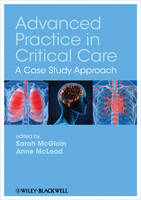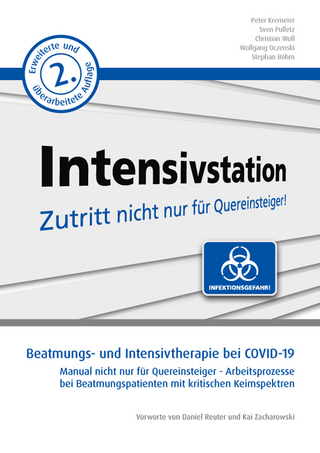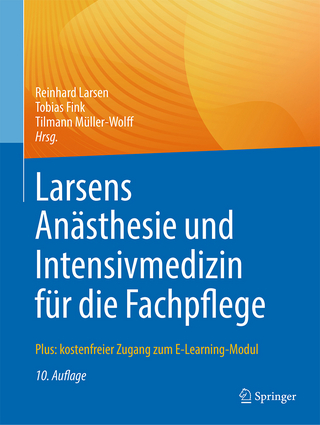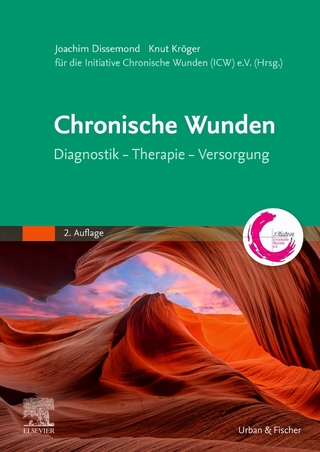
Advanced Practice in Critical Care
Wiley-Blackwell (Verlag)
978-1-4051-8565-3 (ISBN)
Each chapter introduces an initial patient scenario and as the chapter progresses, the patient scenario develops with the theoretical perspectives and application. In this way, it is evident how multi-organ dysfunction develops, impacting upon and influencing other body systems, demonstrating the multi-organ impact that is often experienced by the critically ill patient. In this way, consequences of critical illness such as acute renal failure, haemostatic failure and liver dysfunction are explored. Throughout the text, key research findings and critical care treatment strategies are referred to, applied and evaluated in the context of the given patient case study. Advanced assessment techniques are explained and the underlying pathophysiology is discussed in depth. Advanced Practice in Critical Care is an essential resource for experienced practitioners within critical care whom primarily care for patients requiring high dependency or intensive care.
Sarah McGloin is Senior Lecturer in Acute Care at Anglia Ruskin University, UK. Anne McLeod is Senior Lecturer Critical Care at City University, UK.
Preface ix
Contributors and acknowledgements xi
1 Challenges in contemporary critical care 1
Sarah McGloin
Introduction 1
Critical care without walls 1
Advanced practice 2
Interprofessional roles within critical care 5
Conclusion 7
References 7
2 The physiological basis of critical illness 9
Mark Ranson
Introduction 9
Patient scenario 9
Mechanisms of cellular damage 10
Impact of reduced perfusion on energy production 12
Evaluation of ischaemia: reperfusion injury 13
The inflammatory response and the role of mediators 14
Mechanisms for haemostasis in relation to critical illness 19
Conclusion 25
References 25
3 The patient with haemodynamic compromise leading to renal dysfunction 26
Tracey Bowden and Anne McLeod
Introduction 26
Patient scenario 26
Underlying physiology and pathophysiology 27
Assessment and diagnosis 31
Evidence-based care 35
Ongoing patient scenario 39
Progressing pathophysiology 40
Ongoing assessment 47
Evidence-based care 54
Conclusion 65
References 65
4 The septic patient 71
Sarah McGloin
Introduction 71
Patient scenario 71
Underlying physiology and pathophysiology 72
Assessment and diagnosis 76
Evidence-based care 81
Ongoing patient scenario 83
Progressing pathophysiology 84
Ongoing assessment 91
Evidence-based care 91
Conclusion 100
References 101
5 The patient with acute respiratory failure 105
Anne McLeod
Introduction 105
Patient scenario 105
Underlying physiology and pathophysiology 106
Assessment and diagnosis 109
Arterial blood gas analysis 114
Evidence-based care 122
Ongoing patient scenario 127
Progressing pathophysiology 127
Ongoing assessment 128
Evidence-based care 136
Conclusion 140
References 140
6 The patient with chronic respiratory failure 143
Glenda Esmond and Anne McLeod
Introduction 143
Patient scenario 144
Underlying physiology and pathophysiology 144
Assessment and diagnosis 145
Evidence-based care 148
Ongoing patient scenario 152
Weaning from ventilatory support 153
Ongoing care 157
Conclusion 158
References 158
7 The patient with an intracranial insult 161
Anne McLeod
Introduction 161
Patient scenario 161
Underlying physiology and pathophysiology 162
Assessment and diagnosis 167
Evidence-based care 168
Ongoing patient scenario 172
Progressing pathophysiology 174
Ongoing assessment 177
Evidence-based care 180
Conclusion 185
References 185
8 The patient with a traumatic injury 188
Elaine Cole and Anne McLeod
Introduction 188
Patient scenario 188
Mechanisms of injury 189
Assessment and diagnosis 190
Primary and secondary surveys 191
Underlying physiology and pathophysiology 192
Evidence-based care 193
Continuing patient scenario 196
Evidence-based care 197
Ongoing patient scenario 200
Progressing pathophysiology 201
Ongoing assessment 203
Evidence-based care 207
Management of his pelvic injury 211
Conclusion 212
References 212
9 The patient with a diabetic emergency 215
Sarah McGloin
Introduction 215
Patient scenario 215
Underlying physiology and pathophysiology 216
Underlying pathophysiology 217
Assessment and diagnosis 221
Evidence-based care 223
Ongoing care 225
Conclusion 226
References 226
10 The long-term patient in intensive care unit 228
Phillipa Tredant
Introduction 228
Patient scenario 228
Impact of being in the critical care environment 228
Psychological effects 230
Underlying physiology and physiological effects 235
Quality of life 240
Rehabilitation process 241
Conclusion 245
References 245
11 Ethical considerations in critical care 247
Anne McLeod
Introduction 247
Patient scenario 247
Admission to critical care 247
What are ethics? 248
Biomedical ethical model 250
The role of outreach 252
Ongoing patient scenario 254
Futile situations 254
Withdrawal/withholding of treatment or euthanasia? 254
Patient autonomy 256
The process of withdrawing or withholding treatment 256
Role of the nurse 257
Collaborative decision-making 257
Conclusion 258
References 258
Index 261
| Erscheint lt. Verlag | 9.4.2010 |
|---|---|
| Verlagsort | Hoboken |
| Sprache | englisch |
| Maße | 173 x 246 mm |
| Gewicht | 621 g |
| Themenwelt | Pflege ► Fachpflege ► Anästhesie / Intensivmedizin |
| ISBN-10 | 1-4051-8565-1 / 1405185651 |
| ISBN-13 | 978-1-4051-8565-3 / 9781405185653 |
| Zustand | Neuware |
| Haben Sie eine Frage zum Produkt? |
aus dem Bereich


